When first watching China-born, Hong Kong-based musician Guo Yazhi (郭雅志) perform, it's hard to imagine the woodwind instrument he plays is the suona, a traditional Chinese instrument closely linked to folklore practices, festivals, weddings and funeral proces-sions. In Guo's hands, the suona soars with its brisk and cheerful tones and wails a soulful vibrato in its melancholy timbre like a saxophone.
In the joint concert with Taiwan's National Chinese Orchestra (NCO) tonight at the National Concert Hall (國家音樂廳), the 40-year-old virtuoso will wow the audience with his masterful transformation of the ancient instrument from folk status to the high art of Western orchestra.
According to historical documents, the name suona comes from the ancient Persian instrument surna, and its use was first documented in wind and percussion ensemble music in Shandong, China, 1,800 years ago. The instrument's distinct, high-pitched sound and loudness renders the suona more suitable for solo pieces rather than harmonic performances with its instrumental peers. Its characteristic timbre, sometime imprecise notes and the restrained playing of semitones holds great musical potential but now has limited practical application in modern music.
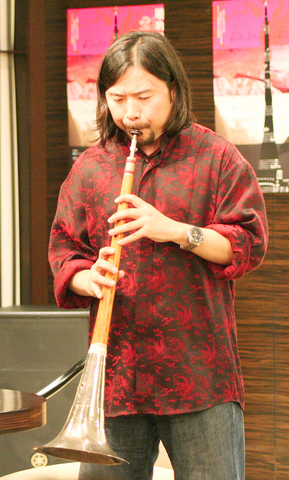
PHOTO COURTESY OF NCO
The modernized version of the suona was developed in the mid-20th century when keys, similar to those of the European oboe, were added to the instrument's sound holes to solve the problems of narrow range and semitonal restraint. The contemporary relatives of the ancient instrument have since been incorporated into woodwind sections of Chinese traditional orchestras.
Guo invented the award-winning removable reed in 1993, which allows for the playing of chromatic notes and complex and rapid tonal shifts without changing the suona's original features. Hailed as a milestone in the instrument's history, the simple piston device fixed to the suona's copper mouthpiece turns the instrument's segre-gative idiosyncrasy into a wide range of expressiveness.
"The irreversible trend is toward more and more frequent encounters and fusion between different musical styles and the traditional suona can barely adapt to the new changes. With the help of removable reeds, the suona can now fit into all types of musical forms, even atonal music," Guo explained.
Guo is the suona principal of the Hong Kong Chinese Orchestra and has honed an international reputation with his sensuous and colorful performances of crossover music.
Since 1991, Guo toured Western Europe, the US, Australia, Japan and other Asian countries. In 1998, Guo participated in the International Pro Musicians Competition held in New York's Carnegie Hall and outplayed two hundred musicians from more than 10 countries, walking away with the gold medal by playing six Chinese woodwind instruments. In the same year, Guo was invited to give solo performances of the suona and saxophone for then US President Bill Clinton during his visit to China. Last year he teamed up with Swiss Orchestral de la Suisse Romande to premiere China-born contemporary composer Wen Deqing's (溫德青) Traces IV concerto for suona.
Guo will tonight perform one of his representative works Invoking Phoenix (喚鳳), a modern suona concerto written in 1996 to take advantage of the suona's complexity and flexibility.
Invoking Phoenix, an original presentation of dramatic intensity, is a breakthrough in terms of suona techniques and musical language, the soft-spoken, gentle musician said of the piece.
Other orchestral pieces on the bill include Song of the Yami Tribe (雅美族之歌) and Playing With Lions (弄獅) by Taiwanese composers. To balance these rather academic tunes, Guo will present the romantic melodies in Second Love Music Suite (第二愛情主題) with six Chinese woodwind instruments. "It's an all-time favorite program among Hong Kong audiences, especially on Valentine's Day," Guo said.
Performance Notes
What: Guo Yazhi, the Great Suona Player and NCO (嗩吶第一吹 -- 郭雅志)
Where: National Concert Hall (國家音樂廳), 21-1 Zhungshan S Rd, Taipei (台北市中山南路21-1號)
When: Tonight at 7:30pm
Tickets: NT$300 to NT$800, through NTCH ticketing outlets
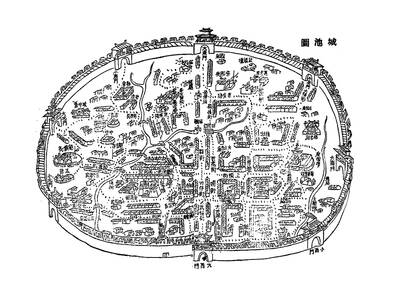
May 26 to June 1 When the Qing Dynasty first took control over many parts of Taiwan in 1684, it roughly continued the Kingdom of Tungning’s administrative borders (see below), setting up one prefecture and three counties. The actual area of control covered today’s Chiayi, Tainan and Kaohsiung. The administrative center was in Taiwan Prefecture, in today’s Tainan. But as Han settlement expanded and due to rebellions and other international incidents, the administrative units became more complex. By the time Taiwan became a province of the Qing in 1887, there were three prefectures, eleven counties, three subprefectures and one directly-administered prefecture, with
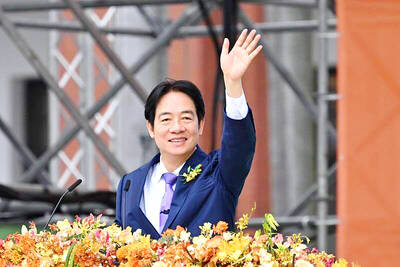
President William Lai (賴清德) yesterday delivered an address marking the first anniversary of his presidency. In the speech, Lai affirmed Taiwan’s global role in technology, trade and security. He announced economic and national security initiatives, and emphasized democratic values and cross-party cooperation. The following is the full text of his speech: Yesterday, outside of Beida Elementary School in New Taipei City’s Sanxia District (三峽), there was a major traffic accident that, sadly, claimed several lives and resulted in multiple injuries. The Executive Yuan immediately formed a task force, and last night I personally visited the victims in hospital. Central government agencies and the
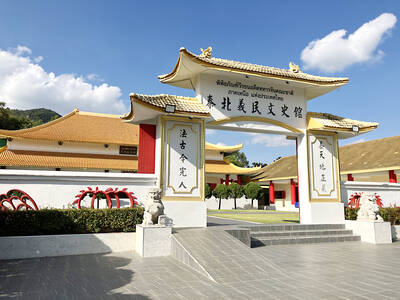
Among Thailand’s Chinese Nationalist Party (KMT) villages, a certain rivalry exists between Arunothai, the largest of these villages, and Mae Salong, which is currently the most prosperous. Historically, the rivalry stems from a split in KMT military factions in the early 1960s, which divided command and opium territories after Chiang Kai-shek (蔣介石) cut off open support in 1961 due to international pressure (see part two, “The KMT opium lords of the Golden Triangle,” on May 20). But today this rivalry manifests as a different kind of split, with Arunothai leading a pro-China faction and Mae Salong staunchly aligned to Taiwan.
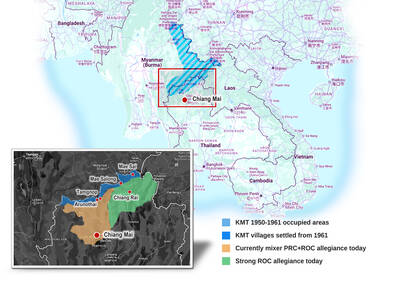
As with most of northern Thailand’s Chinese Nationalist Party (KMT) settlements, the village of Arunothai was only given a Thai name once the Thai government began in the 1970s to assert control over the border region and initiate a decades-long process of political integration. The village’s original name, bestowed by its Yunnanese founders when they first settled the valley in the late 1960s, was a Chinese name, Dagudi (大谷地), which literally translates as “a place for threshing rice.” At that time, these village founders did not know how permanent their settlement would be. Most of Arunothai’s first generation were soldiers